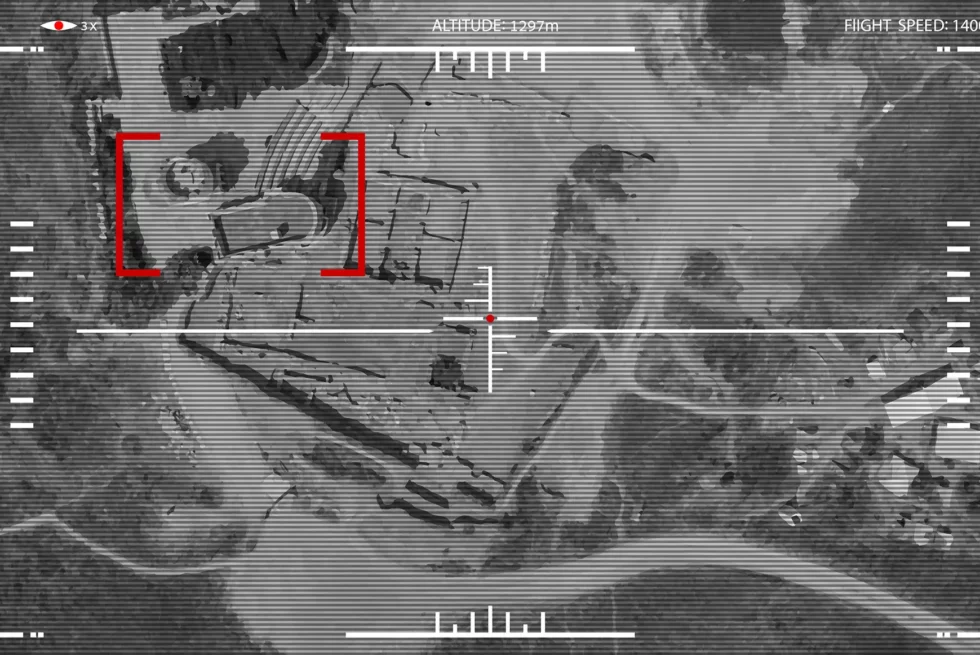A comprehensive guide to understanding the unique advantages of PTFE and FEP plastics in cutting-edge military and aerospace technologies
Introduction
In the high-stakes and ever-evolving world of military and aerospace engineering, the race for superior performance is relentless. From advanced radar systems to cutting-edge stealth technology, the materials used play a critical role in achieving mission success and maintaining a competitive edge. One game-changing material that has made an indelible mark among product developers and engineers is the family of plastics known as PTFE and FEP. In this in-depth article, we will explore the incredible applications of these plastics in military and aerospace sectors and uncover the reasons behind their RF and IR transparency properties that make them an indispensable asset.
Section 1: A Primer on PTFE and FEP Plastics
Polytetrafluoroethylene (PTFE) and fluorinated ethylene propylene (FEP) are high-performance plastics belonging to the family of fluoropolymers. Offering exceptional chemical resistance, temperature stability, and electrical insulation properties, these plastics are renowned for their non-stick, non-reactive characteristics. Their unique properties have led to numerous applications across a wide array of industries, including manufacturing, automotive, medical, and electronics. However, when it comes to military and aerospace applications, their RF and IR transparency sets them apart, making them an invaluable resource.
Section 2: The Role of RF and IR Transparency in Stealth Technology
Radio Frequency (RF) and Infrared (IR) transparency are crucial components in modern stealth technology. As military forces around the globe continuously strive for superior invisibility on the battlefield, materials that can achieve RF and IR transparency are in high demand. PTFE and FEP plastics fulfill this requirement, allowing for the development of equipment and vehicles with enhanced radar and thermal signature reduction. This unparalleled invisibility helps in evading enemy detection, thereby increasing mission success rates and providing a strategic advantage.

Section 3: The Power of PTFE and FEP Plastics in Radar Systems and Antenna Enclosures
One of the key applications of PTFE and FEP plastics in military and aerospace sectors is their exceptional RF transparency, making them an ideal material for use in radar systems and antenna enclosures. By encapsulating antennas in these materials, engineers can ensure that signal transmission and reception remain unaffected, while providing protection from environmental factors such as moisture, heat, and corrosion. Additionally, their low dielectric constant and dissipation factor contribute to minimal signal loss in high-frequency applications, making them indispensable in communication and navigation systems.
Section 4: Advanced Optical Systems and IR Sensors – Current Use Cases and Future Possibilities
Infrared (IR) sensors play a vital role in the development of advanced military and aerospace systems, such as missile guidance, target acquisition, and surveillance. PTFE and FEP plastics, with their transparent properties in the infrared spectrum, are an excellent choice for use in optical systems, including IR sensor windows and protective covers. This transparency allows for accurate and efficient data transmission, enabling mission-critical components to function at peak performance, even under extreme environmental conditions.
Current Use Cases:
- Missile Guidance Systems: IR sensors are integral to the precision and accuracy of modern missile guidance systems. PTFE and FEP plastics are used to create protective windows and covers for these sensors, ensuring that the guidance systems receive unobstructed, high-quality data from the sensors. This allows for precise navigation and targeting, increasing the effectiveness of missile systems in both offensive and defensive operations.
- Unmanned Aerial Vehicles (UAVs): UAVs, or drones, are increasingly being employed in military and aerospace applications for reconnaissance, surveillance, and even combat missions. Equipped with IR cameras and sensors, these UAVs rely on PTFE and FEP plastics to protect the delicate sensors while maintaining optimal data transmission. This ensures that the UAVs can carry out their missions effectively, providing valuable intelligence and capabilities to military forces.
- Forward-Looking Infrared (FLIR) Systems: FLIR systems are used extensively in military and aerospace applications for night vision, target acquisition, and tracking. The IR transparent properties of PTFE and FEP plastics enable these systems to function effectively, providing clear, high-quality images even in low-light or challenging environmental conditions.
Future Possibilities:
- Hypersonic Vehicles: As research into hypersonic vehicles progresses, the need for materials that can withstand the extreme temperatures and conditions of hypersonic flight becomes crucial. PTFE and FEP plastics, with their high-temperature resistance and IR transparency, could play a significant role in the development of thermal protection systems and optical sensors for these cutting-edge vehicles, enabling them to navigate and operate effectively at extreme speeds.
- Space-Based Infrared Surveillance: With the growing importance of space-based assets for military and aerospace applications, the development of advanced infrared surveillance systems is critical. PTFE and FEP plastics could be used in the construction of space-based IR sensors and optical systems, providing enhanced capabilities for detecting and tracking threats, such as missile launches or hostile spacecraft, from orbit.
- Advanced Imaging and Sensing Technologies: As imaging and sensing technologies continue to evolve, the demand for materials that can facilitate accurate data transmission and protection will only increase. PTFE and FEP plastics could play a pivotal role in the development of next-generation imaging systems, including those that use multispectral or hyperspectral imaging, providing enhanced situational awareness and capabilities for military and aerospace applications.

Section 5: Wire and Cable Insulation for Demanding Environments
The exceptional insulating properties of PTFE and FEP plastics make them a highly sought-after choice for wire and cable insulation in demanding military and aerospace environments. With temperature stability that can withstand extreme conditions, these plastics offer unparalleled protection for critical electrical systems, ensuring continuous operation and minimizing the risk of failure. Furthermore, their inherent flame resistance and low smoke generation make them a safer alternative for applications where fire safety is paramount.
Section 6: Aircraft Components and Seals
The durability, chemical resistance, and temperature stability of PTFE and
FEP plastics make them ideal for use in various aircraft components and seals. In particular, their resistance to fuel, hydraulic fluids, and lubricants makes them suitable for use in fuel systems, hydraulic actuators, and other critical components. These plastics can withstand harsh environments and help extend the service life of components, reducing maintenance costs and downtime.
Section 7: Space Applications and Satellite Technology
The remarkable properties of PTFE and FEP plastics extend to the realm of space applications and satellite technology. Their low outgassing characteristics make them an ideal choice for use in the vacuum of space, where traditional materials may release volatile compounds that can cause contamination and compromise the performance of sensitive instruments. PTFE and FEP plastics can be found in satellite components, such as wiring harnesses, waveguides, and insulation, helping to ensure reliable communication and data transmission from space.
Section 8: Material Advancements and Innovations
As research into PTFE and FEP plastics continues, material advancements and innovations are constantly emerging. These advancements have led to the development of new PTFE and FEP-based composite materials with enhanced mechanical properties, such as increased strength and stiffness. These composites offer engineers even greater design flexibility and are expected to find new applications in military and aerospace sectors, further expanding the reach of PTFE and FEP plastics.
Section 9: Environmental Considerations
While the exceptional performance of PTFE and FEP plastics in military and aerospace applications is undeniable, it’s important to consider the environmental impact of these materials. With increasing global emphasis on sustainability and reducing the environmental footprint, researchers and industry experts are exploring ways to improve the recyclability and disposal of these plastics. Some initiatives include developing recycling processes specifically for fluoropolymers and investigating the use of bio-based alternatives.
Conclusion
In the world of military and aerospace technology, every material used must meet the highest standards of performance and reliability. PTFE and FEP plastics, with their unique RF and IR transparency properties, have proven to be an indispensable tool for engineers and product developers alike. From radar systems to stealth technology, these plastics have revolutionized the industry, ensuring mission success and maintaining a competitive edge in the face of ever-evolving challenges. As research and innovation continue to push the boundaries of these materials, we can expect even greater achievements in the future, further solidifying the role of PTFE and FEP plastics in military and aerospace applications.
Unlock the full potential of RF and IR transparency in your military or aerospace applications. Don’t hesitate to reach out to our team of experts at Fluoron. We’re here to help you find the perfect solution tailored to your specific needs. Contact us today at solutions@fluoron.com or give us a call at 1-800-785-4491. Let’s revolutionize your projects together!







